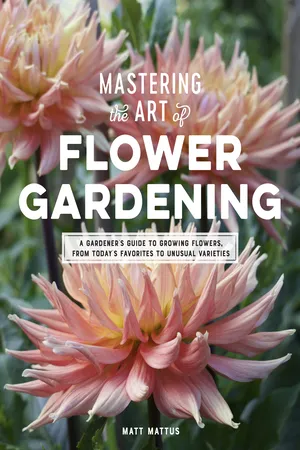SUMMER BLOOMS
Here in New England, summer can really be divided into three distinct seasons. Early summer can be every bit as variable and unpredictable as spring. It is often cool and rainy, but it will just as likely be sunny and hot. High summer tends to be more stable, marked by heat and sun and vigorous growth. When late summer arrives, growth slows and the first yellowing leaves appear as nights grow longer and cooler. At the same time, new crops of flowers emerge in each season according to their growth patterns and preferences.
As much as gardeners seem to love to complain about the weather, weather always plays a key role in the success of a garden. Of course, we have no control over it, but we do have control over what we choose plant or sow, and when. We celebrate summer with flowers everywhere, whether for picking for arrangements or leaving alone in borders as landscape enhancement.
Adventurous gardeners are optimistic. We stubbornly try to grow flowers a zone or two warmer or the other way around, hoping for that perfectly long and cool spring that lasts into summer or a summer with adequate rainfall and low humidity. We then discover later that droughts and heat waves were the reality.
Setting the weather aside, summer is the peak season for flowers, regardless of where you live. CSAs and flower farms share their bounty at farmers markets, and our own gardens bear us floral gifts almost every day. Savvy gardeners often can tell the exact date by what is in bloom in their garden. The season may begin with cool-loving, rarer annuals like larkspurs, schizanthus, and viscaria, which must be raised from direct-sown seed. The dependable flowers of midsummer often are the more familiar perennials. Popular again are zinnias, asters, and marigolds, heat-loving annuals that are easy to grow from seed sown in early summer. And of course there are the majestic border bulbs like lilies and dahlias to enjoy.
A summer without zinnias is like a summer without ice cream. Plant rows, just for cutting, in the vegetable garden every three weeks until mid-August for continual blooms.
Salpiglossis sinuata ‘Kew Blue’
New agapanthus varieties are being introduced with increasing frequency, like this bicolored variety ‘Twister’
Shirley poppies are one of the most beautiful and delicate of annuals. Fragile and a bit challenging to grow, its flowers like this that make them so desirable.
Intersectional or Orient Pet lilies are sometimes sold as 'tree lilies' as they grow stems that are stronger than traditional selections, but most will still need staking as these can reach heights taller than 6 feet (1.8 m).
Dahlia ‘Hollyhill Calico’ a miniature ball but grown on a plant that can reach 6 feet (1.8 m) tall. Some are completely red while others are all ivory with just a speck of color on one petal.
A mouthful to pronounce, Zaluzianskya or Night Phlox looks understated and is often best grown in containers, as one grows not just for its appearance but for its vanilla scent at night.
Mignonette (Reseda odorata) are about as old fashioned as one can get when it comes to growing annuals. It was a popular Victorian cut flower, but rarely seen or grown anymore. Their fragrance, while mild, is not unlike that of scented violets.
Nicotiana collection in vases. Clockwise from top: Fragrant Nicotiana longiflora, N. knightiana, N. alata ‘Tinkerbell,’ and N. langsdorffii, which self seeds beautifully around the garden.
Lavender grows best in alkaline soil, enjoying a pH between 6.8 and 7.0. It enjoys plenty of water but requires good drainage too. It will not tolerate continually wet conditions in the summer or poor drainage combined with freezing winter conditions. Lavender performs exceptionally well in California, Colorado, and the western mountain states, but with some attention, it can be coaxed to success in most growing areas. See Featured Flower, here.
• Lavender likes sandy soil where water drains freely.
• Plant in full sun. The more hours per day lavender gets sunshine, the better.
• Lavender struggles in rich, acidic soil, growing best in slightly alkaline soil with a pH between 6.5 and 7.5.
• Variety matters. Choose the right variety for your region.
AGAPANTHUS
Agapanthus spp.
Agapanthus are as sturdy as hostas or daylilies, but they can be fussy when it comes to blooming. Plants in the amaryllis family, including clivia and amaryllis, are easier to raise if you avoid root damage and keep frost away from the roots and inner stems. While commercially propagated varieties now appear in many of our gardens and are worth seeking out, new named selections are often better choices, as some can reac...










